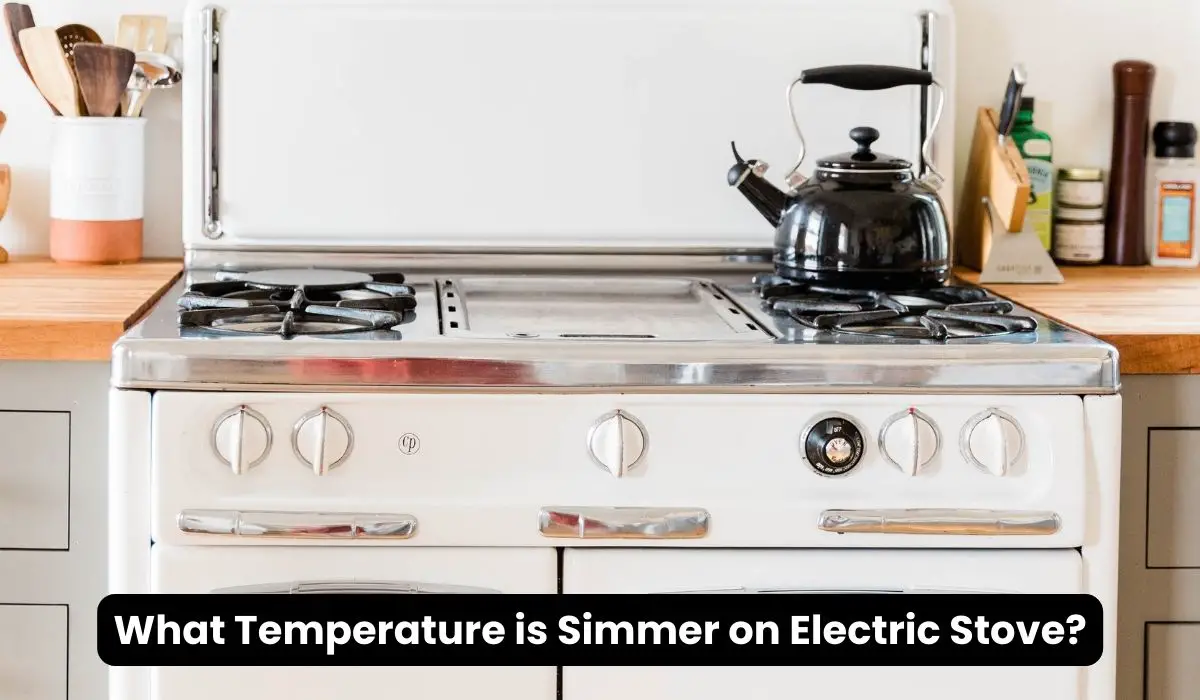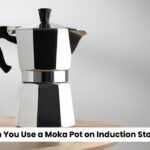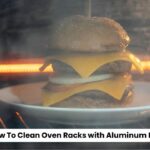Have you ever wondered, “What temperature is simmering on an electric stove?” Simmering is like the gentle lullaby of the culinary world, where flavors mingle and dance to create delicious dishes. It’s that magical sweet spot below boiling, where soups, stews, and sauces transform into culinary masterpieces. Whether you’re a seasoned chef or a novice in the kitchen, understanding the art of simmering is a game-changer.
In this article, we’ll break down the secrets of simmering. So, let’s embark on a simmering adventure and uncover the mysteries of this essential cooking technique.
Table of Contents
What is Simmering on an Electric Stove?
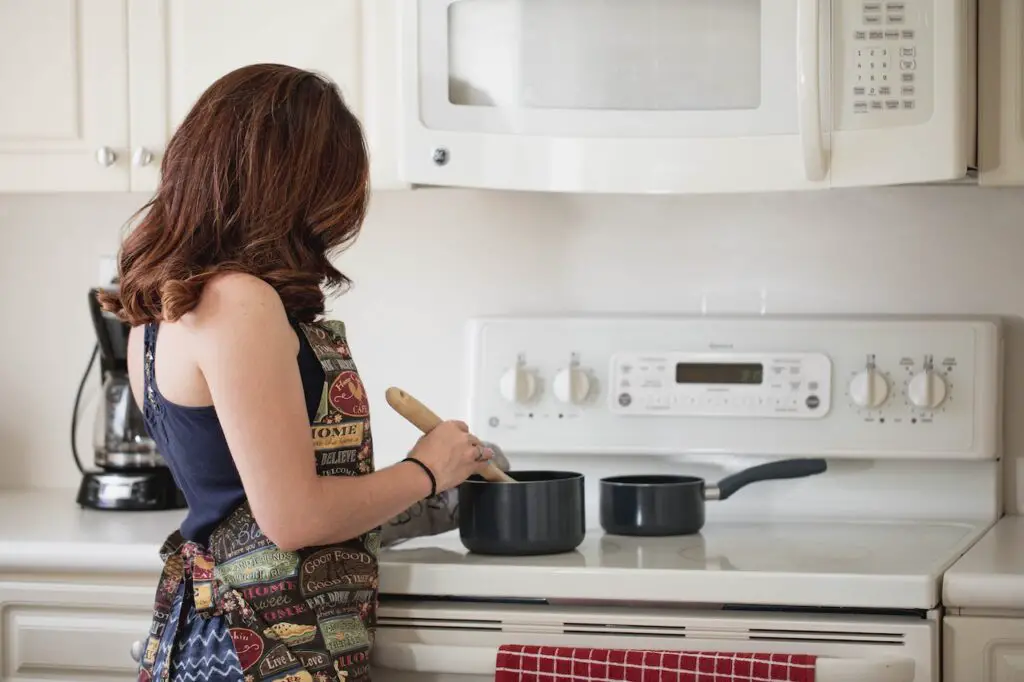
Simmering on an electric stove is like cooking in slow motion. Imagine you have a pot on your electric stove and want to make something delicious, like soup or sauce. But you don’t want it to bubble and boil like a volcano because that might ruin your food. So, you use something called simmering.
Simmering means you heat your pot, but not too hot. It’s like when you take a warm bath, not too hot and not too cold—just perfect. You turn the knob on your stove to a lower number, and that’s simmering heat.
Tiny bubbles pop up in your soup or sauce as your pot warms up. They’re like little whispers, not big noisy bubbles. You put a lid on your pot, but only partially. Leave a little space for the steam to escape, like when you leave a door cracked open.
You also stir your food gently occasionally, like a slow-motion swirl in your pot. Simmering makes your food taste good because it gives all the flavors time to mix and mingle like friends at a party.
So, simmering is like a calm and gentle way of cooking on your electric stove. It helps your food turn out yummy and delicious. Now you know the secret to making great-tasting dishes.
The Importance of Simmering:
Simmering is about more than just preventing your culinary creations from boiling over. It serves several crucial purposes in cooking:
1. Flavor Infusion
Simmering allows the flavors of various ingredients to meld together, creating a harmonious and well-balanced dish. As the liquid simmers, it absorbs the essence of herbs, spices, and other components, resulting in a more flavorful end product.
2. Tenderizing Tough Cuts
When cooking tougher cuts of meat, simmering is a game-changer. The low, steady heat softens connective tissues, making the meat tender and succulent. This is why braising is famous for dishes like pot roast and osso buco.
3. Reduction and Thickening
Simmering can reduce the volume of a liquid, concentrating its flavors and thickening the consistency. This is particularly useful when making reductions for sauces or gravies.
4. Avoiding Overcooking
Unlike boiling, which can lead to overcooking and mushy textures, simmering is gentler on delicate ingredients. It preserves the integrity of vegetables, seafood, and grains.
What Temperature is Simmer on Electric Stove?
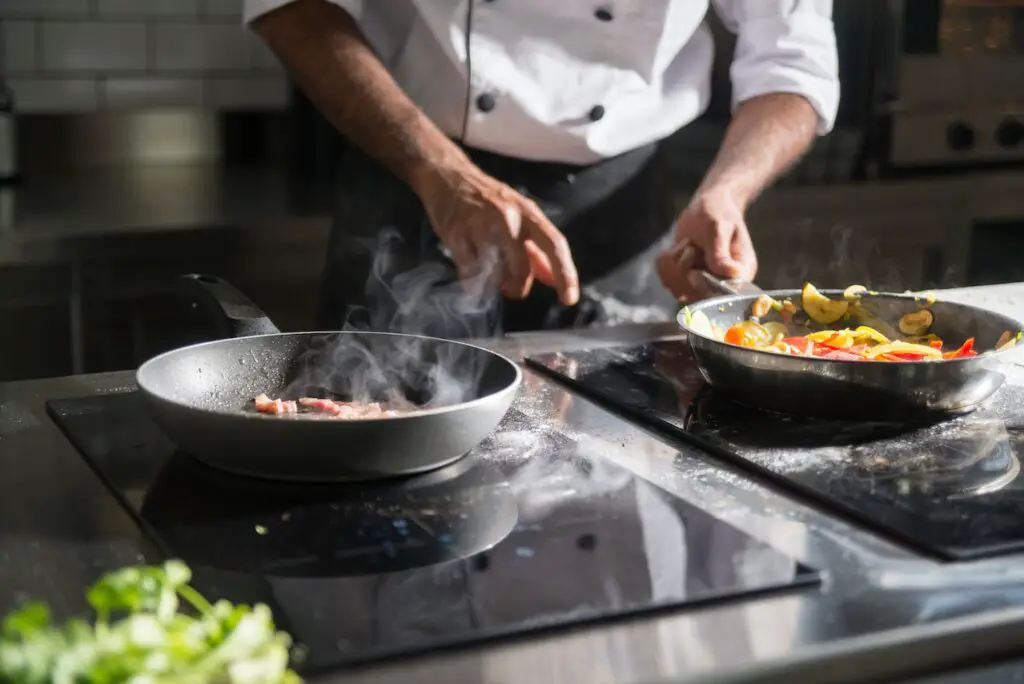
When you simmer on an electric stove, you’re cooking your food gently, like a cozy bedtime story for your dinner. You don’t want it to go crazy and boil like a big pot of bubbling lava. So, what’s the right temperature for simmering?
Picture your stove like a volume knob on a radio. Do you know how you turn the knob to make the music louder or softer? With simmering, you want to keep the volume pretty low, just like when you’re listening to a lullaby before bedtime.
The perfect simmering temperature on an electric stove is usually between 180°F and 205°F (82°C to 96°C). That might sound like a bunch of numbers, but it’s like finding the sweet spot on a thermometer. It’s not too hot, and it’s not too cold. It’s just right.
To get there, you turn the knob on your stove to a setting that’s not too high. It’s like keeping the music soft and soothing. You’ll see tiny bubbles starting to appear in your pot. They’re not big and wild like a boiling pot, just small and gentle, like a sleepy fish swimming in a pond.
So, when you’re simmering on your electric stove, remember to keep it low and gentle, like a quiet bedtime story. Your food will thank you for its delicious flavors.
Steps to Achieve the Perfect Simmer:
To simmer effectively on an electric stove, follow these steps:
1. Use the Right Pot
Choose a heavy-bottomed pot with a lid. This helps distribute heat evenly and prevents scorching.
2. Set the Temperature
Turn the electric stove to medium-low or low heat. The exact setting may vary depending on your stove’s wattage, so start with medium-low and adjust as needed.
3. Monitor the Bubbles
As the liquid heats up, tiny bubbles form on the surface. These bubbles should be about 1/8 to 1/4 inch in diameter. Adjust the heat if they are too small or too large.
4. Keep the Lid Partially On
Place the lid on the pot, but leave a small gap for steam to escape. This regulates the temperature and prevents the pot from boiling over.
5. Stir Occasionally
Give your simmering concoction an occasional gentle stir to ensure even cooking and prevent sticking.
The Science of Simmering:
Understanding the science behind simmering can help you become a better cook. When you simmer your food, several chemical reactions take place that contribute to your dishes’ overall taste and texture.
Flavor Infusion:
Simmering allows the tastes of the ingredients to meld together. This is particularly important in dishes like soups and stews, where you want a harmonious blend of tastes.
Tenderizing Proteins:
The low and slow cooking of simmering helps break down tough proteins, resulting in tender and succulent meat.
Thickening Agents:
Simmering can also reduce the liquid content in your dish, making it thicker and more flavorful. This is why sauces and gravies are often simmered.
Difference Between Simmering and Boiling:
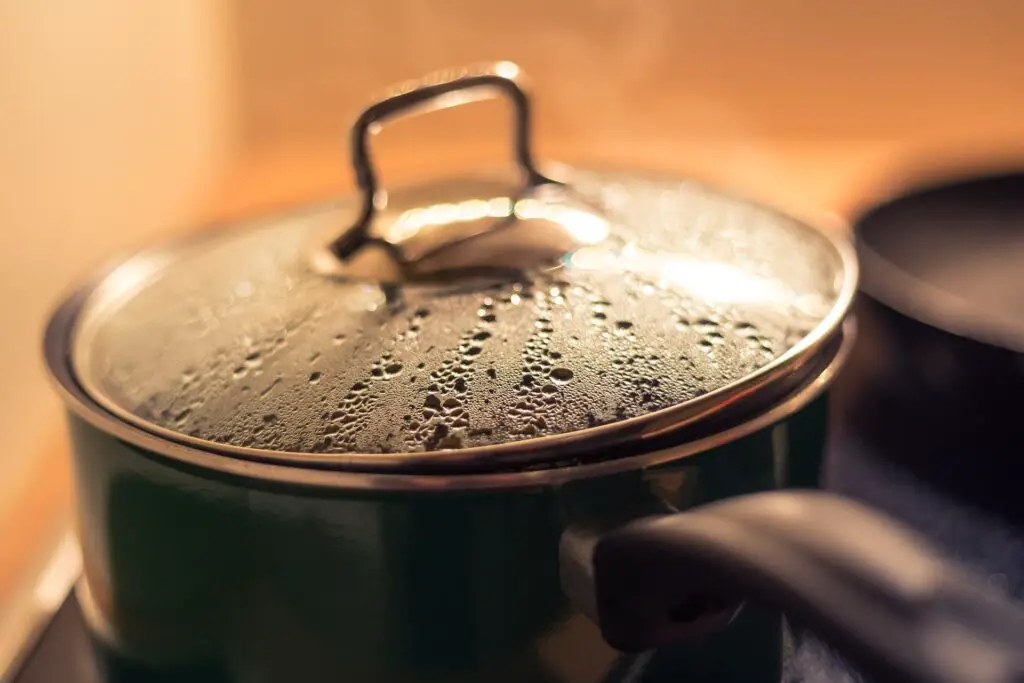
Simmering and boiling seem similar. After all, they both involve heat, water, and food. But here’s the scoop: They’re pretty different.
Boiling is like a wild dance party in your pot. It happens when water gets super-duper hot—like, 212°F (100°C) hot. The water goes wild at this temperature, making giant, vigorous bubbles. It’s like a water explosion in there.
Here are some things to know about boiling:
Temperature: Boiling happens at a high temperature, right at that 212°F mark. It’s so hot that water turns into steam, and bubbles rush to the surface like they’re in a hurry.
Bubbles: When you boil, those bubbles are big and rowdy. They’re all over the place, pushing your food around like they’re at a party.
Cooking Speed: Boiling is speedy cooking. It’s great for things like pasta because they get soft quickly. But be careful; it can be too much for delicate foods.
Now, let’s talk about simmering. It’s like a warm, cozy hug for your food. Simmering happens at lower temperatures, usually between 180°F to 205°F (82°C to 96°C). It’s not hot or cold, just right, like Goldilocks’ porridge.
Here’s the lowdown on simmering:
Temperature: It’s a bit cooler than boiling but still warm enough to make tiny bubbles that gently rise to the surface. These bubbles are well-behaved, not rowdy like in a boil.
Cooking Speed: Simmering is slow and steady. It’s perfect for delicate foods that need time to soak up flavors and become tender. Think of a pot of soup or a savory stew. They love a good simmer.
Stirring: You don’t have to stir as much when you simmer. The food is pretty chill and doesn’t need a wild stir-fry party.
So, remember, boiling is the wild party, and simmering is the cozy hug. They’re both excellent in their own way, depending on what you’re cooking. Now you’re a pro at telling the difference between these two cooking buddies.
Difference Between Simmering and Poaching:
Simmering is like a gentle hug for your food. It happens when you cook something in a pot with a little bit of bubbling going on in the liquid. Imagine making a yummy soup or a tasty sauce. Put your ingredients in a pot with some liquid, then heat it on the stove. When the liquid makes tiny bubbles, you turn down the heat so it doesn’t boil too much. Simmering helps all the flavors mix nicely like friends chatting calmly.
Poaching, on the other hand, is like a gentle bath for your food. It’s when you cook something by placing it in hot, but not super boiling, liquid. Think about cooking an egg or some delicate fish. You take a shallow pan, put in some water (or a special poaching liquid), and heat it until you see tiny bubbles starting to show up. Then, you carefully put your food in the warm bath. Poaching keeps your food soft and tender, like a comfy nap.
So, the big difference is that simmering has a bit more action with those tiny bubbles, while poaching is all about a gentle, warm bath for your food. They’re great ways to make delicious dishes, but you choose which one depending on your cooking. Happy cooking.
Is Simmer Low or Medium Heat?
Simmering is when you cook something on low heat. Imagine you have a stove with different heat settings, like low, medium, and high. When you simmer, you want to choose the lowest setting, which is like a gentle hug of warmth for your food. It’s not too hot or cold – it’s suitable for soups, stews, and sauces. So, simmering is low heat.
Conclusion:
Simmering is a fundamental cooking technique that can elevate your dishes. You can achieve culinary perfection in your home kitchen by understanding the ideal simmering temperature on your electric stove and following some simple steps.
So, next time you’re whipping up a batch of your favorite soup or simmering a savory sauce, remember the importance of maintaining that gentle, steady simmer. Your taste buds will thank you.
FAQs
What are the advantages of simmering on an electric stove?
Simmering on an electric stove offers precise temperature control, making it easier to maintain a consistent simmer. It’s also energy-efficient, as electric stoves heat evenly.
Can I simmer at a lower temperature?
While the typical simmering range is 180°F to 205°F (82°C to 96°C), you can experiment with slightly lower temperatures, depending on your recipe. Just keep in mind that cooking times may be longer.
Can I simmer on a glass-top electric stove?
Yes, you can simmer on a glass-top electric stove. However, be cautious when moving pots to avoid scratching the surface.
Is simmering the same as boiling?
No, simmering and boiling are different. Simmering occurs at lower temperatures, while boiling is a vigorous, rolling boil at 212°F (100°C).
